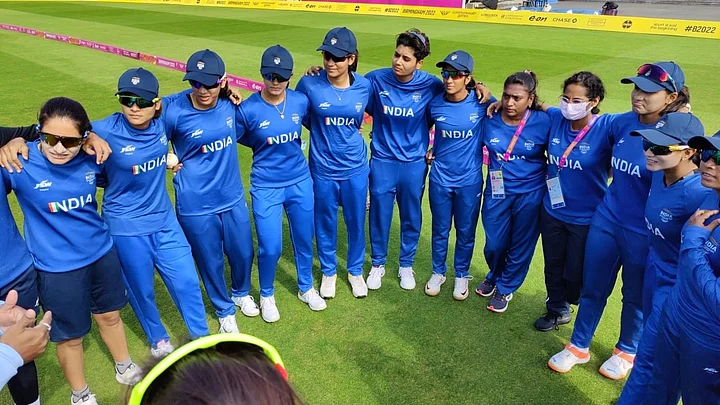"BCCI implements pay equity policy for Women Cricketers," read the subject line of the board's official press statement made on Friday afternoon, igniting celebrations across social media with 'finally' being the running theme of the posts.
“The match fee for both Men and Women Cricketers will be same as we move into a new era of gender equality in Indian Cricket,” elaborated board secretary Jay Shah on social media.
Under the new structure, members of India's women's cricket team will receive Rs 15 lakh for each Test they play, Rs 6 lakh for every ODI and Rs 3 lakh for every T20I - the same match fees as their male counterparts.
The pay equity policy is indeed a welcome initiative by the BCCI and could be the first of many such steps taken by the cricket body to eradicate the gender divide prevalent in sport.
However, Shah’s words that this move will herald a new era of ‘gender equality’ in Indian cricket has more that's wrong with it, than right.
Why?
Same Match Fees, But Still Different Central Contracts
India's national teams get paid their salaries in two parts - through national contracts and then through their match fee.
So while this new move by the board will allow both men and women cricketers to receive the same amount of match fee, there is no change in the annual contracts offered to the women's team.
BCCI's list of centrally contracted male players is divided into four categories - Rs 7 crore for Grade A+ players, Rs 6 crore for Grade A players, Rs 3 crore for Grade B players and Rs 1 crore for Grade C.
Meanwhile, the highest category among women players (Grade A) receives Rs 50 lakh, Grade B receives Rs 30 lakh and Grade C gets Rs 10 lakh each.
See the disparity?
The amount received by a Grade A women cricketer, say skipper Harmanpreet Kaur or Smriti Mandhana is half of what is being paid to somebody like a Kuldeep Yadav or Washington Sundar, who come under Grade C in men’s contract, and aren't even India regulars.
That means a top player in the Indian women’s team does not even earn half of what a fringe player in the country's mens' team makes annually.
Captain Harmanpreet, a key player for the Indian women’s team has played 20 T20Is and 17 ODIs since October 1, 2021, while Kuldeep’s numbers in the same cycle are so limited that they don't even add to double digits.
The leg-spinner featured just nine times – 2 T20Is and 7 ODIs – for the men in blue in the same period. Despite playing more games in the last calendar year than Kuldeep, Harmanpreet is still way behind the former with regards to her pay scale.
This is just one example of the glaring pay divide between genders that still exists within Indian cricket.
That is not to mention the third avenue of income from the BCCI that the board has also let remained untouched.
26 percent of the board's annual revenue has to be passed onto the players. 13 percent is given to the male players, 10.3 percent to domestic cricketers and 2.7 percent is to be divided between junior cricketer and India's elite female international stars.
See the disparity?
More Matches, More Money
Also, if one is to celebrate this new move by the board, it cannot be done without one look on the disparity between the number of matches played by the women's and men's teams.
In the last one year, the women's team played a total of 23 T20Is and 18 ODIs, which includes 5 T20Is from the Commonwealth Games and 7 from the ODI World Cup. They did not feature in a single Test match.
Meanwhile, the BCCI had the men’s team play 40 T20Is, 18 ODIs and eight Test matches since last October.
Already playing fewer matches than the men, and with no Tests in the last year either, how much does this new move say about BCCI's 'important step towards tackling discrimination'.
The new policy would turn fruitful only if BCCI and the ICC make a conscious effort to increase the number of women matches played next year.
Though BCCI’s move is certainly a step forward considering the current gender divide existing within the sport, it is far from a finished product.
